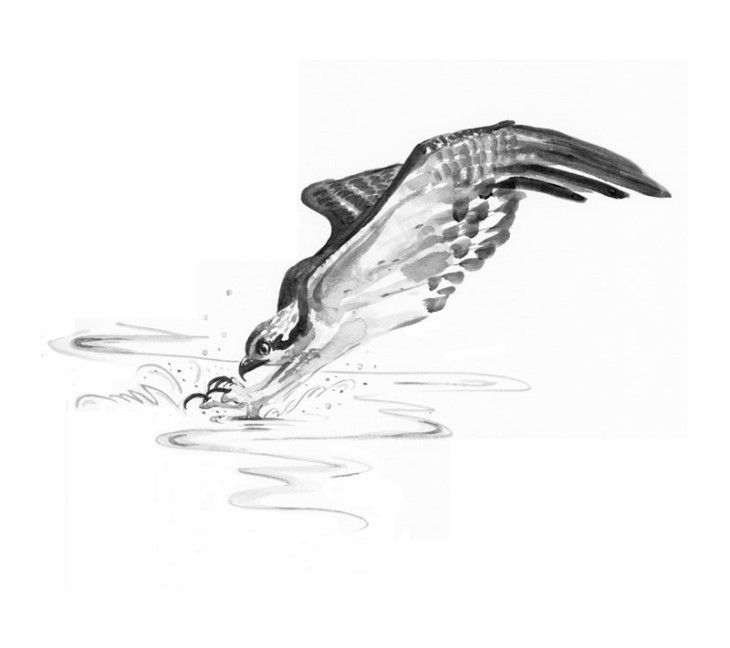
Flyfishing from a canoe in a small headwater pond at the tippity-top of the Connecticut River is usually a quiet experience. That’s why the sudden splash caused me to turn my head just in time to see an osprey struggling up out of the water and into the air.
My first thought was that the bird had misjudged its attempt at a fish, splashing down instead of plucking the fish out of the water. The bird quickly flew up about 25 feet above the water and began to half fly, half hover in a circle. Before long it made a second, wings folded, headlong dive for the water. But instead of expanding its wings and grasping acrobatically with its talons for the fish, the bird went headfirst into the water.
If you are as ignorant as I was about the osprey’s fishing technique, you might think this particular bird had a technique problem. I imagined it must have given itself a throbbing headache from smacking into the water at full speed diving for a fish. All for nothing.
Later, I learned that this bird was actually doing what it was supposed to do. The osprey is the only raptor that dives into the water with its feet thrust forward on either side of its head. This allows the bird to keep the fish in sight throughout the dive, and the feet hitting the water first cut through the water’s surface and protect the head. Conveniently, the osprey also has closable nostrils to keep out water during impact.
An osprey’s feet are specially designed to help them secure fish. Heavy scales and small, needle-sharp spikes (known as spicules) help them hold on to their catch. The outer talons can rotate forward or backward, much like an opposable thumb, allowing the osprey to align a captured fish parallel to its own body for better aerodynamics in flight. All told, an adult osprey can take off with ease if the fish is less than 25 percent of its 2- to 4-pound body weight.
The osprey I was watching flew up to a branch hanging over the pond and sat patiently watching the pond like a hawk. Which it almost is: the osprey’s taxonomic name, Pandion haliaetus, means ‘sea hawk’ in Greek, and the bird is commonly called a ‘fish hawk.’ The osprey is not a true hawk but rather the only member of the Pandion family group, found on all continents except Antarctica.
The mouth of the Connecticut River at Long Island Sound contains the highest concentration of breeding ospreys along the southern New England coast. In the early 1940s, there were approximately 200 nesting pairs of ospreys at the mouth of the Connecticut. Populations declined steadily to only a few pairs by early 1960s, due to exposure to the pesticide DDT. More recent figures, from 2001, show 47 active nesting pairs in the river’s lower reaches, a notable rebound.
The osprey population in the upper Connecticut River watershed is likewise still recovering from DDT. Only the northern reaches of the river currently have active nesting sites, and field studies have documented no active nesting attempts in the rest of the Vermont/New Hampshire reach of the river. In New Hampshire during the 2004 nesting season, 8 young fledged from 5 active nests. In Vermont, as of 2007, there were 6 recorded nesting sites in the upper reach of the river.
Because the use of DDT has been outlawed in the United States, most of us think that that threat to ospreys is long gone. But osprey are long-distance migrants and are exposed to DDT during their migration and in their wintering areas, where the use of DDT is not forbidden. Most of the osprey found in the Connecticut Valley spend the winter in South America, though a few join the snowbirds in the Florida keys.
Back on the pond, the osprey’s third try was a charm. The bird flew to the center of the pond, suddenly fell out of the sky as though shot, dove straight into the pond head-first, and on reappearing, had a fish tenuously gripped between two talons. It quickly secured the fish with both feet, oriented it straight ahead, and despite the wiggling, held on to the fish and flew off.
I, on the other hand, safe and dry in my canoe, did not land a fish all day.


Discussion *